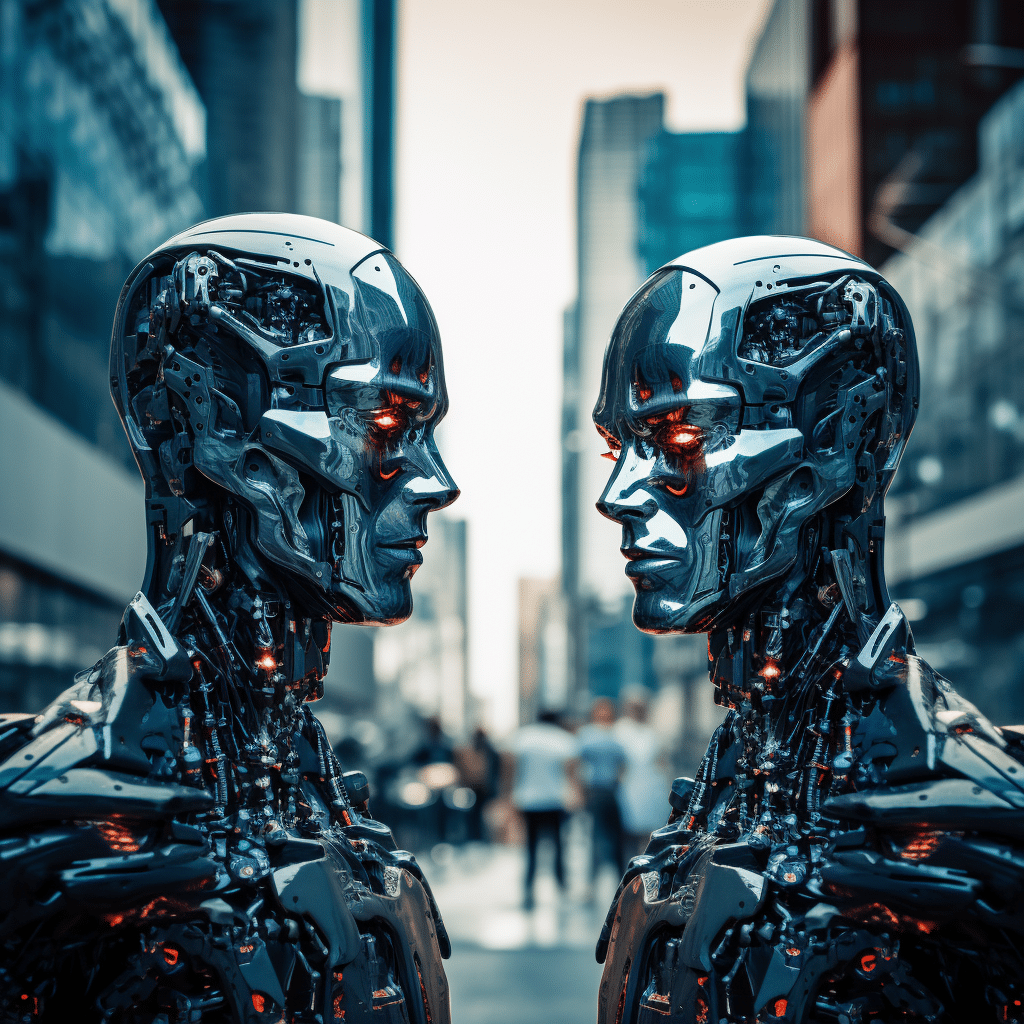
How Transformer Architecture Revolutionized NLP?
The field of Natural Language Processing (NLP) has witnessed a significant revolution in recent years with the advent of Transformer architecture. Originally introduced by Vaswani et al. in 2017, this revolutionary architecture has become the cornerstone for a wide range of NLP applications, surpassing the limitations of previous models.
Before the Transformer architecture, recurrent neural networks (RNNs) and convolutional neural networks (CNNs) were the go-to solutions for NLP tasks. However, these architectures had limitations that affected their performance in sequence-to-sequence tasks, such as machine translation or text summarization.
The Transformer architecture addresses these limitations by employing attention mechanisms. Instead of relying on sequential processing, the Transformer model allows for parallel processing of words in a sentence. This parallelization drastically improves efficiency and enables the model to capture dependencies between words more effectively.
Transformer architecture

The attention mechanism in the Transformer architecture allows the model to pay attention to different parts of the input sequence, assigning higher importance to relevant words for a given context. By calculating attention weights, the Transformer can prioritize the most relevant words, resulting in improved accuracy and better contextual understanding.
Another crucial aspect of the Transformer architecture is the concept of self-attention. It allows the model to understand the relationships between different words within the same sentence. This self-attention mechanism enables the model to capture long-range dependencies and contextual information without relying solely positional encoding.
The introduction of the Transformer architecture revolutionized various NLP tasks, including machine translation, question-answering systems, text generation, and sentiment analysis. Its ability to process complex sequences and capture long-range dependencies has pushed the boundaries of NLP performance. Additionally, the Transformer’s inherent parallelization makes it computationally efficient, enabling faster training and inference times.
Furthermore, the success of the Transformer architecture has led to the development of advanced transformer-based models like BERT (Bidirectional Encoder Representations from Transformers) and GPT (Generative Pre-trained Transformer), which have achieved state-of-the-art results in countless NLP benchmarks.
Without a doubt, the Transformer architecture has revolutionized NLP, offering more accurate, contextually aware, and efficient models. Its impact on the field will continue to drive advancements and innovation in natural language understanding and generation, propelling us towards more sophisticated AI-powered applications.
How does transformer architecture overcome the limitations of traditional NLP models?
The transformer architecture overcomes the limitations of traditional NLP models in several ways:
1. Long-term dependencies
Traditional models, like Recurrent Neural Networks (RNNs), struggle with long-term dependencies due to the sequential nature of their computations. In contrast, the transformer architecture uses self-attention mechanism, allowing it to capture dependencies between any two positions in a sequence efficiently. This ability to handle long-term dependencies leads to improved performance in tasks such as machine translation or sentiment analysis.
2. Parallel processing
Transformers enable parallel processing of words in a sequence rather than relying on sequential computations like RNNs. This parallelism leads to significantly faster training times and makes transformers more scalable.
3. Contextual understanding
Transformers excel in capturing contextual information by considering the entire input sequence simultaneously. Each word representation is influenced by contextual information from all other words through self-attention. This helps models to understand the meaning of a word in the context of the whole sentence, thereby improving performance in tasks like text classification, sentiment analysis, and question-answering.
4. Handling variable-length inputs
Traditional models often require fixed-length inputs, which limits their ability to handle variable-length inputs such as sentences or documents. Transformers can easily handle variable-length inputs without requiring additional preprocessing or padding. This flexibility makes transformers more applicable to a wide range of NLP tasks.
5. Transfer learning and pre-training
Transformers can be effectively pre-trained on large-scale datasets using unsupervised learning tasks such as masked language modeling or next sentence prediction. This pre-training enables the models to learn general language representations, which can then be fine-tuned on specific downstream tasks with relatively smaller labeled datasets. This transfer learning paradigm has led to significant improvements in various NLP tasks.
Overall, the transformer architecture’s ability to model long-term dependencies, parallel processing, handling variable-length inputs, capturing contextual understanding, and leveraging transfer learning makes it a powerful and widely used approach for NLP tasks.
What is the role of transformer architecture in revolutionizing natural language processing (NLP)?
The transformer architecture has played a significant role in revolutionizing natural language processing (NLP) by introducing attention mechanisms, which have improved the performance of NLP tasks significantly.
Traditional NLP models, such as recurrent neural networks (RNNs) and convolutional neural networks (CNNs), have limitations in capturing context dependencies and maintaining long-term dependencies. These models process input sequentially, which can be inefficient for long sentences or documents.
The transformer architecture, introduced by Vaswani et al. in 2017, addressed these limitations by solely relying on attention mechanisms. Instead of processing the input step by step, the transformer model attends to all the words in the input simultaneously. This allows the model to efficiently capture dependencies between all positions in the input sequence, regardless of their distances.
The transformer architecture also facilitates parallelization, as all words in the input can be processed in parallel. This leads to faster training times compared to traditional models.
Moreover, the transformer architecture has introduced a self-attention mechanism, where each word in the input sequence attends to all other words. This attention mechanism allows the model to assign weights to different words based on their importance for the prediction, enabling the transformer to focus on the most relevant information and effectively learn linguistic patterns.
The transformer architecture has led to significant advancements in various NLP tasks, including machine translation, text summarization, sentiment analysis, and language generation, among others. Its ability to capture long-range dependencies and efficiently process input sequences has revolutionized the field of NLP and opened doors for more complex language understanding tasks.
Can you provide real-world examples that demonstrate the impact of transformer architecture in advancing NLP applications
Sure! Here are some real-world examples that demonstrate the impact of transformer architecture in advancing NLP applications:
1. Google Translate: Google Translate uses the transformer architecture to provide accurate translations between different languages. It has significantly improved the quality of translations by utilizing transformers to capture long-range dependencies and context in the input text.
2. BERT (Bidirectional Encoder Representations from Transformers): BERT, a transformer-based model, has had a profound impact on various NLP tasks. It has achieved state-of-the-art results on tasks like question answering, sentiment analysis, named entity recognition, and language understanding. BERT’s ability to capture contextual information through self-attention has greatly improved the performance of these tasks.
3. GPT (Generative Pre-trained Transformer): OpenAI’s GPT model has demonstrated impressive results in generating human-like text. By training on a massive amount of data, GPT can generate coherent and contextually relevant paragraphs, making it beneficial for tasks like text completion, dialogue systems, and content generation.
4. Transformer-based Chatbots: Transformers have greatly influenced the development of chatbots. Models like DialoGPT, built using transformers, have shown significant improvements in generating conversational responses. They can understand and generate responses that are more contextually relevant and coherent.
5. Speech Recognition: Transformers have also impacted speech recognition systems. Researchers have explored transformer-based models to improve accuracy in converting spoken language to written text. By incorporating the powerful self-attention mechanism, transformers have helped in capturing long-range dependencies and improving the overall performance of speech recognition systems.
These are just a few examples that highlight the impact of transformer architecture in advancing NLP applications. The ability of transformers to capture contextual information, handle long-range dependencies, and provide state-of-the-art performance has made them a fundamental tool in NLP research and development.
What specific features of transformer architecture contribute to its success in NLP tasks?

The success of the transformer architecture in NLP tasks can be attributed to several specific features:
1. Self-attention mechanism: Transformers use self-attention to capture relationships between different words in a sentence. This mechanism allows the model to weigh the importance of each word in the context of the whole sentence, enabling it to capture long-range dependencies and improve the understanding of sentence semantics.
2. Bidirectional processing: Unlike traditional recurrent neural networks (RNNs), transformers process words in parallel instead of sequentially. This bidirectional processing allows the model to take into account both the preceding and succeeding words when generating representations for each word, leading to better contextual understanding.
3. Positional encoding: As transformers do not have recurrence, they lack information about the order of words in a sentence. Positional encoding is used to provide the model with information about the positions of words in the input sequence, enabling it to capture the sequential order of words.
4. Multi-head attention: Transformers employ multi-head attention, where attention is computed independently in multiple subspaces or “heads.” This allows the model to learn different relationships between words and capture various levels of information, enhancing its ability to handle different aspects of language.
5. Layer normalization: Transformers use layer normalization to normalize the inputs at each layer. This improves the stability of training and allows the model to learn more effectively.
6. Encoder-decoder architecture: Transformers are commonly used in sequence-to-sequence tasks, where the input sequence is transformed into an output sequence. The encoder-decoder architecture helps the model to generate relevant output based on the input sequence, making it suitable for tasks like machine translation and text summarization.
These features combined make the transformer architecture successful in NLP tasks by enabling it to capture contextual dependencies, handle long-range relationships, and generate accurate and relevant outputs.









Your article helped me a lot, is there any more related content? Thanks!
Your article helped me a lot, is there any more related content? Thanks!
Can you be more specific about the content of your article? After reading it, I still have some doubts. Hope you can help me.
Very interesting points you have remarked, regards for putting
up.Raise your business